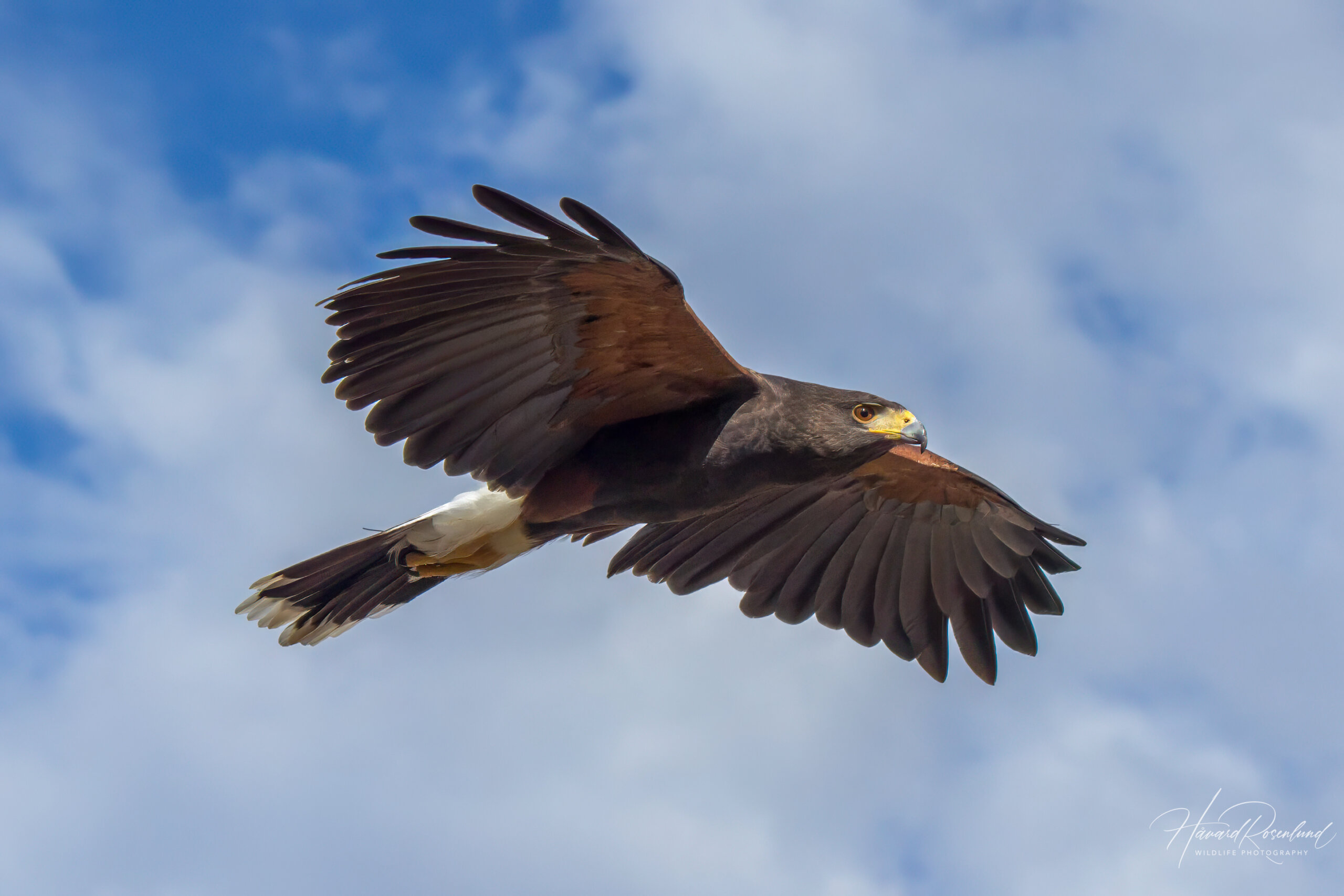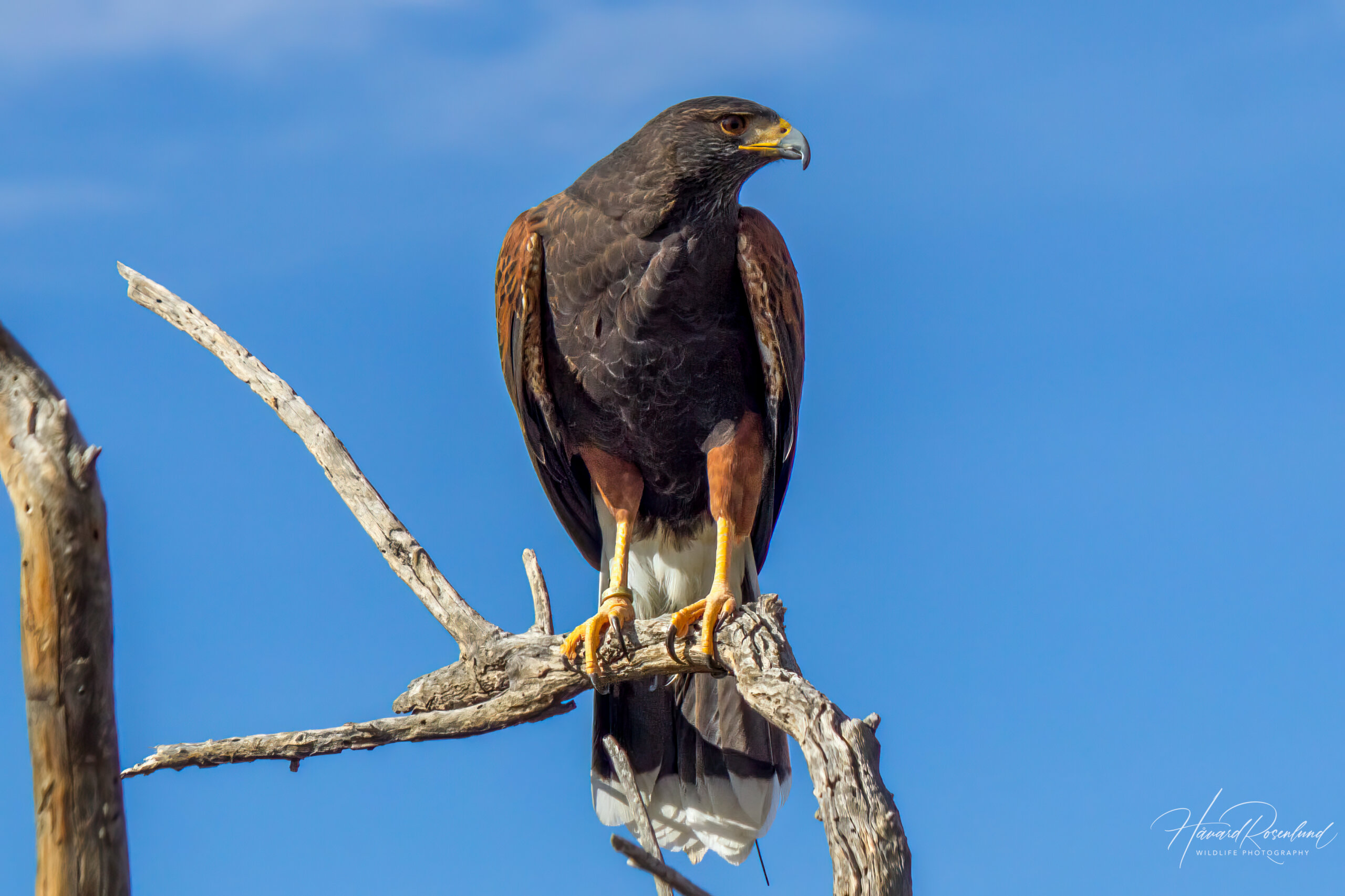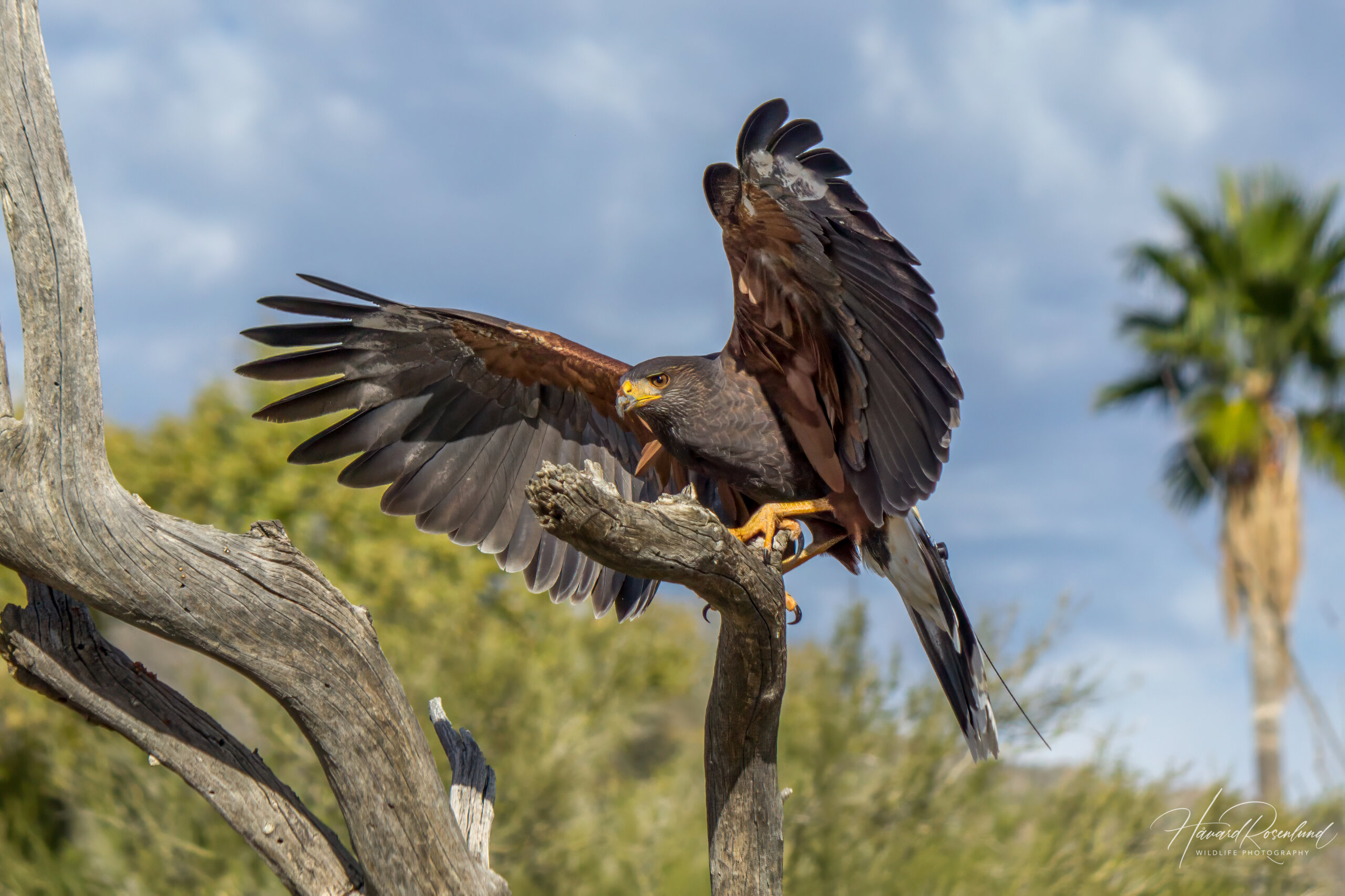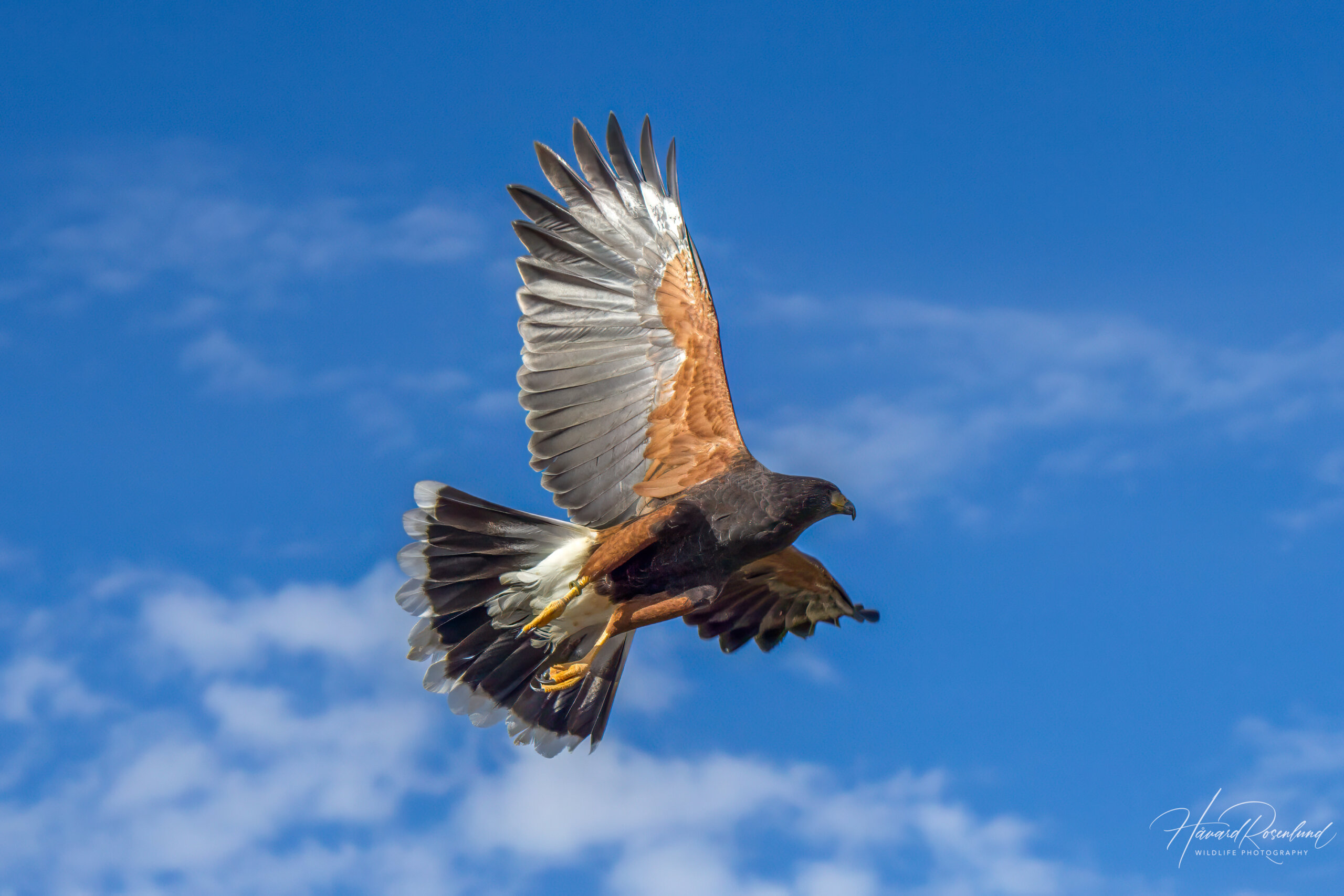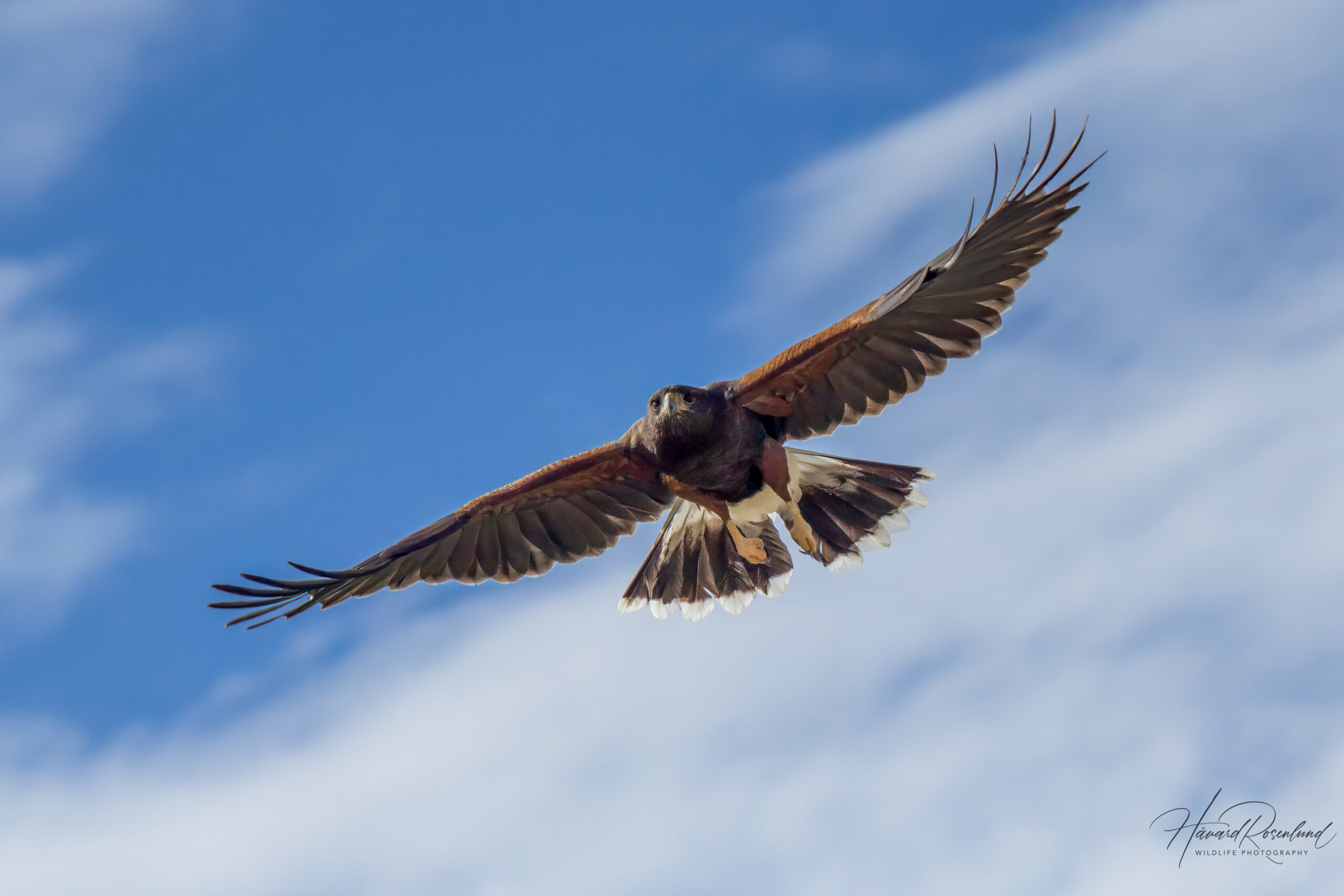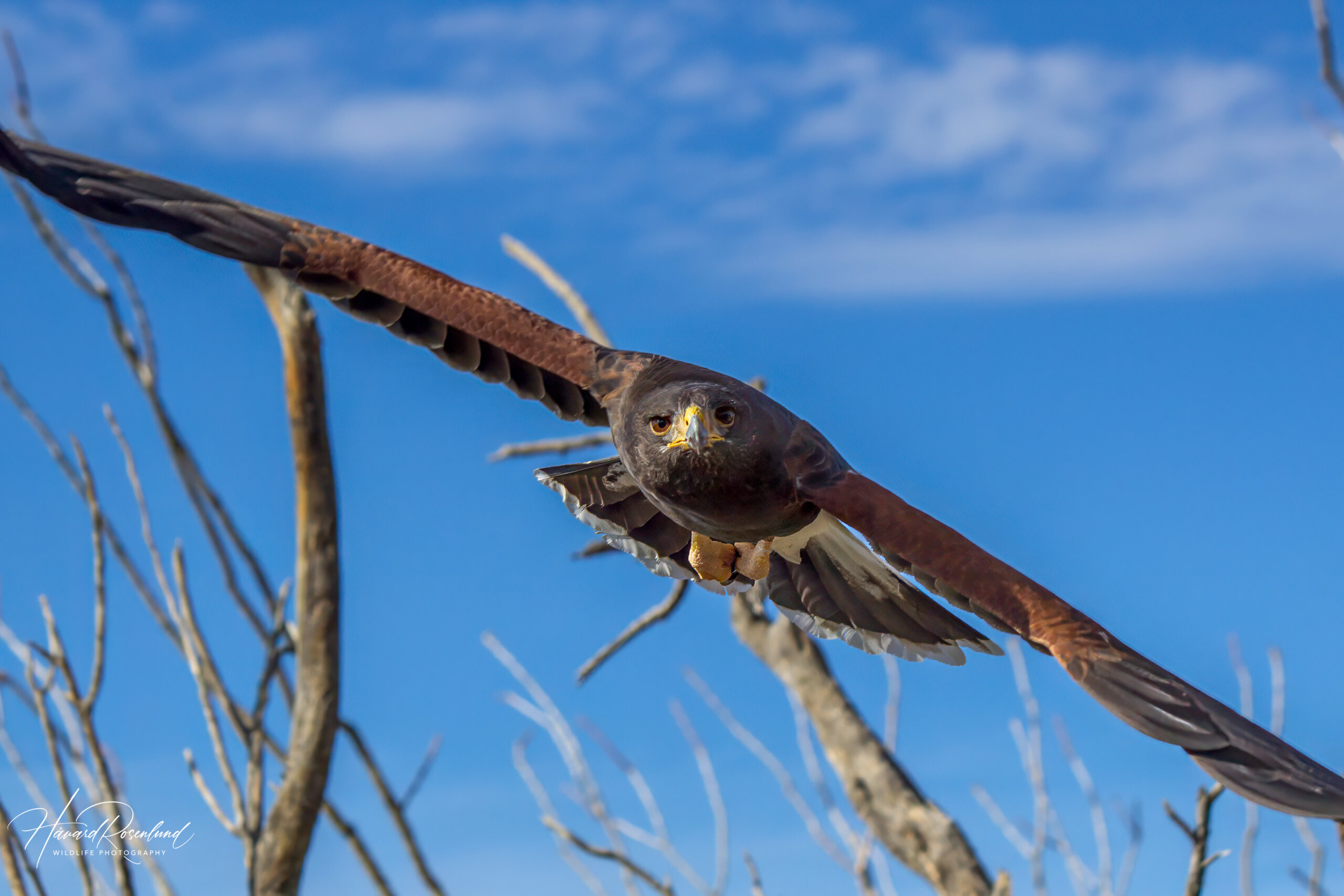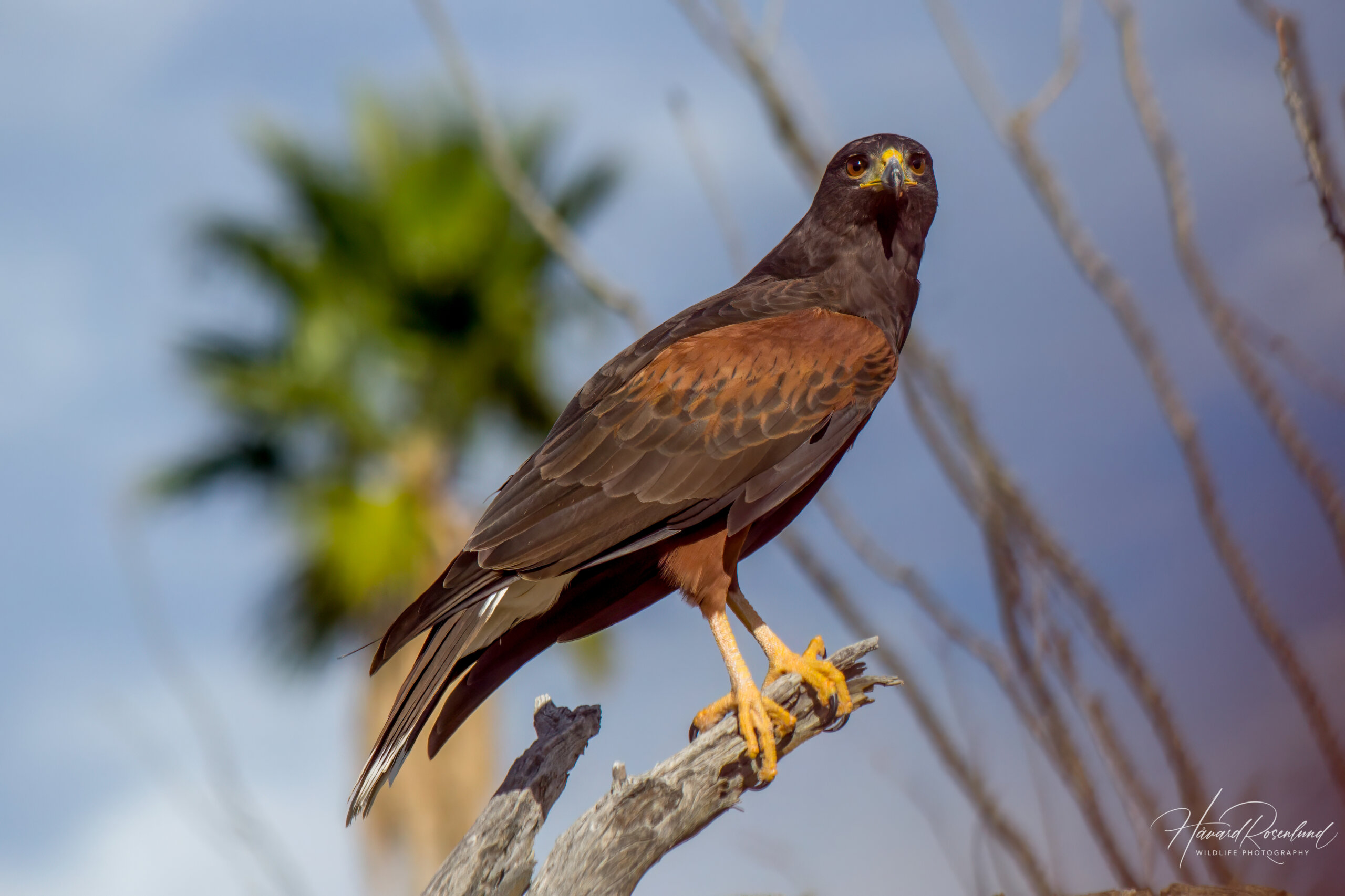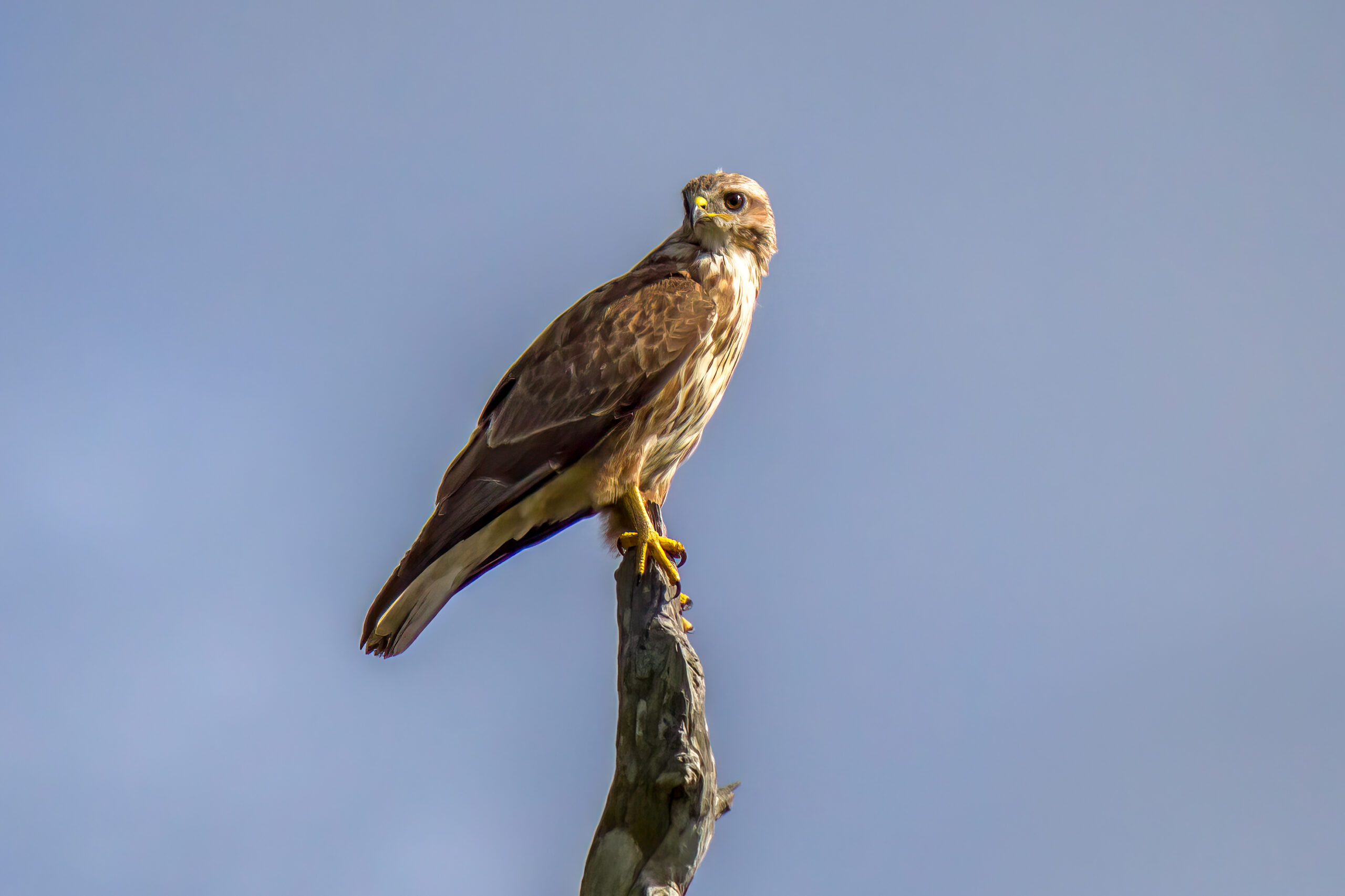Description
The Harris’s hawk (Parabuteo unicinctus), also known as bay-winged hawk and dusky hawk, is a stunning medium-large bird of prey found in the Americas. It is closely related to the Old World buzzards. It reaches a length between 46-59 cm (18-23 in). Females are generally larger than males, and the average weight for a female is around 1 kg (2.2 lb), whereas it is 700 g (1.5 lb) for a male. Wingspan can reach 120 cm (47 in). Body plumage is dark brown. Shoulders, thighs and underwing coverts are chestnut. Both the tip and the base of the tail is white. Juveniles are paler in coloration and much more streaked all over. Although young birds and adults look different, the chestnut shoulders on both is a giveaway for the species.
Diet & habitat
The Harris’s hawk can be found in deserts, grasslands, arid scrub and open marshy landscapes with scattered trees and woodlands. It is also common in agricultural lands. It will catch and feed on small mammals, birds, lizards, and large invertebrates. Because this is a social species, Harris’s hawks often hunt in groups and can therefore take down prey much larger than what is typical for a bird of prey its size, such as jackrabbits. Smaller prey are caught individually, either from a perch or through flying through the air and pouncing on prey on the ground.
Social behaviour & hunting
The Harris’s hawk is a social species, which is unusual among raptors. A social group can be from 2-7 individuals. The oldest female will be the leader, often with the oldest male as the second in command. The rest of the group will be their young from previous years. As they live in groups, they will take turns in looking out for danger or prey, and if a threat is spotted the guard will emit an alarm call. This species often lives in open areas with few perches available, making it difficult to find decent lookout points. The Harris’s hawks have solved this problem by doing something called “back stacking”. The hawks will literally stand on each other’s backs as they try get a higher vantage point. As many as four individuals have been observed neatly stacked on top of each other.
The Harris’s hawks have two different strategies when hunting socially with their family groups. The first strategy is to tire the prey until it gives up from exhaustion. They do this by alternating on who chases the prey. One hawk in the group initiates the chase, and when the first ends the chase, another takes over. This repeats until the prey is eventually caught. The second strategy is to have the rest of the group waiting outside of a burrow while one flushes out the prey from its hiding place. When the prey appears, the awaiting birds attack together. When a prey is caught socially, they all share it between themselves.
Nesting
Although a breeding pair can successfully build a nest and raise young on their own, it is quite often a family affair with the Harris’s hawks. Fewer than three birds (one female and two males) are seldom seen when they are nesting, but even more birds are quite common. The birds partaking in the raising of young beside the breeding pair are most often young from previous years.
The female lays 2-4 eggs in a nest situated either in a small tree, a bush, on a cactus, or sometimes on a suitable man-made structure. The nest is made of sticks, roots, and stems, and often lined with finer materials such as leaves and moss. The female will do most of the incubation, which lasts 31-36 days. When they hatch the chicks quite often need to be kept cool, especially those living in the desert areas, and the mother will provide shade by spreading her wings over the nest. The young take to the wings for the first time after 6 weeks. A few will leave the parents and disperse after 3-4 months, while others stay for years within the family unit.
Status
The Harris’s hawk has a large distribution and is widespread in the Americas. Although it is losing some of its natural habitat through human practices, it also expands into deforested areas. Some individuals are lost to poisoning, and to collisions with vehicles and power lines. It has few natural enemies and there are no serious threats to the population at large. It is listed as least concern on the IUCN Red List. The Harris’s hawk is a very popular bird in falconry, mostly because of its social nature and intelligence. For the experienced falconer it is easy to train. Failed attempts at training Harris’s hawks have resulted in an abundance of feral individuals in Western Europe, and especially in Britain, where a few individuals have bred.





